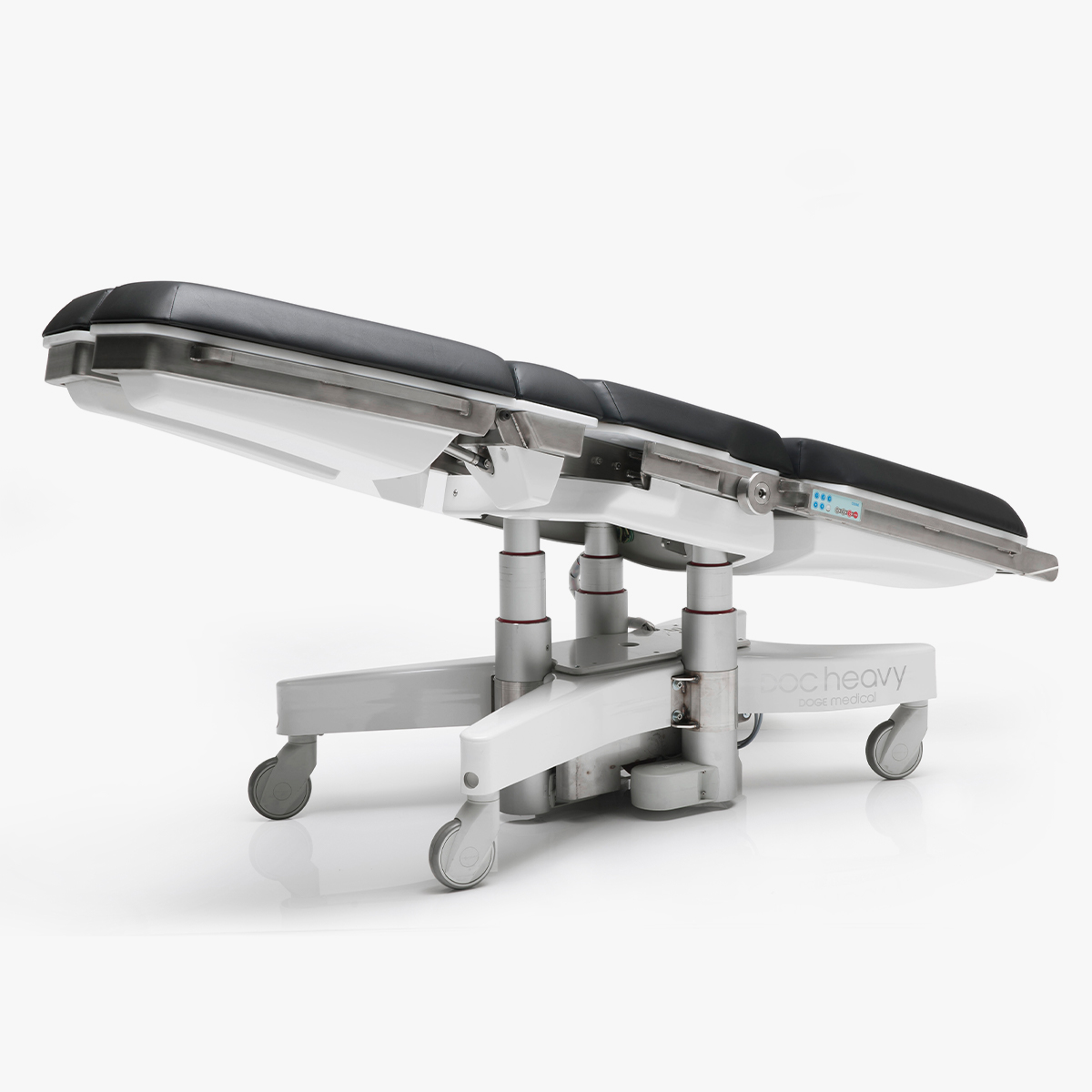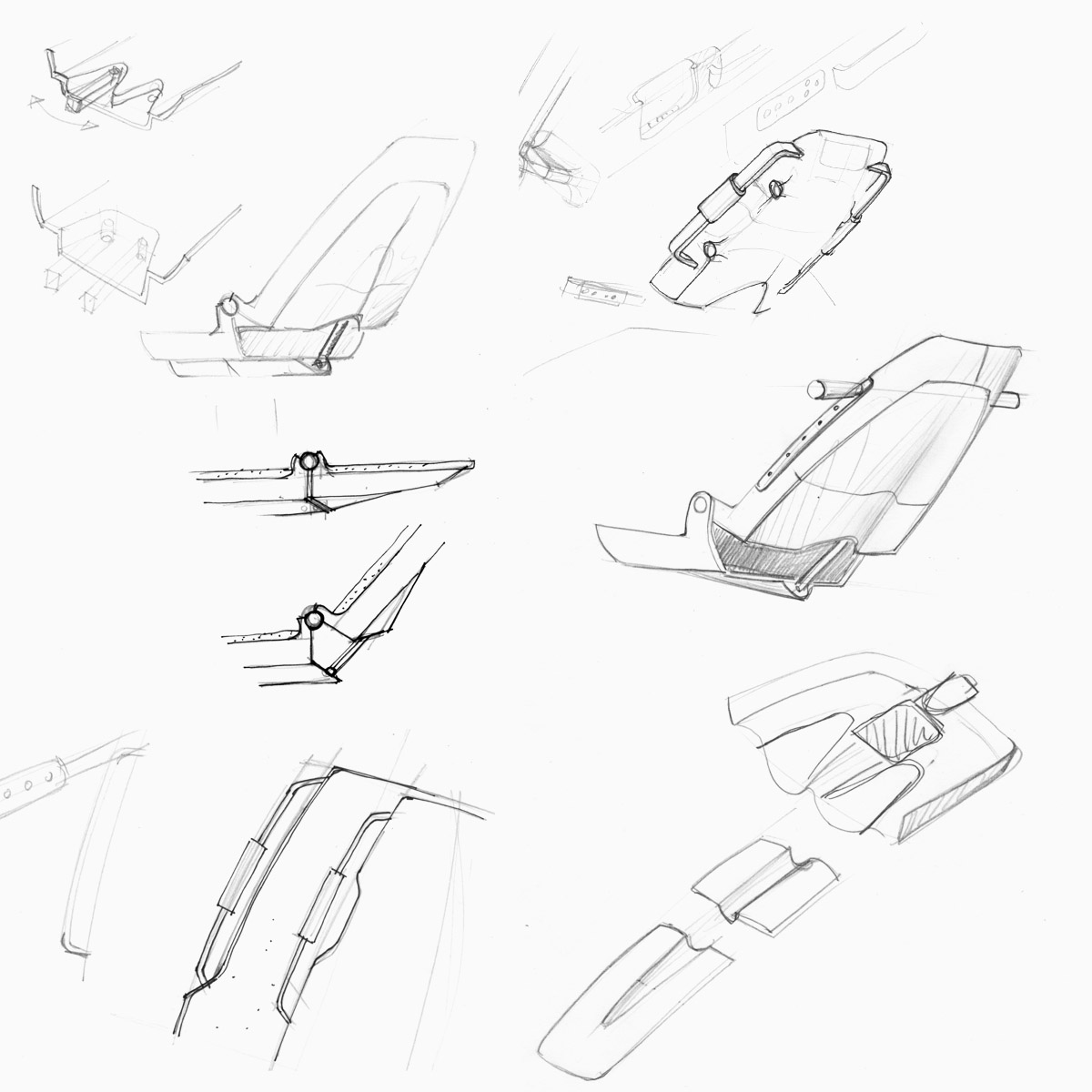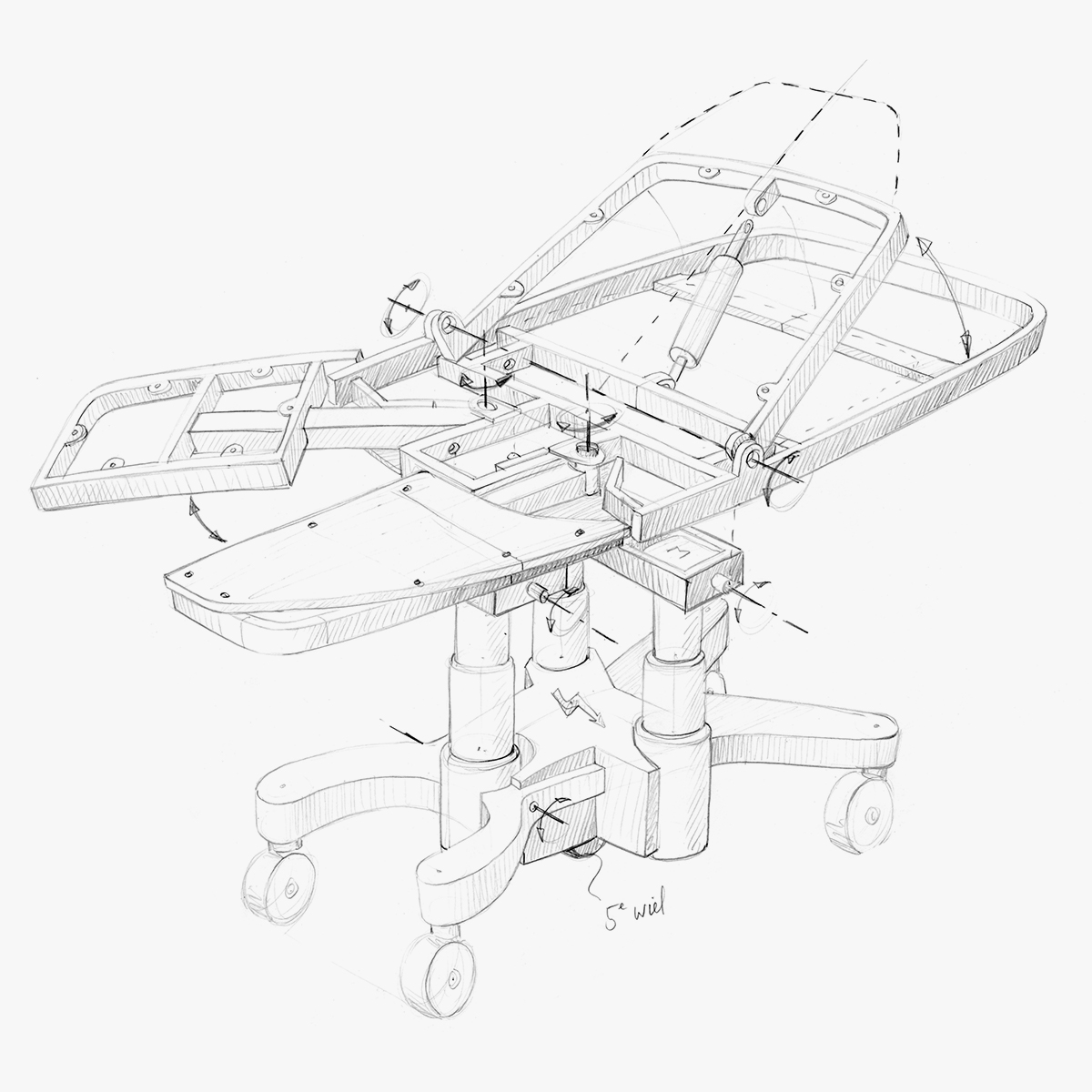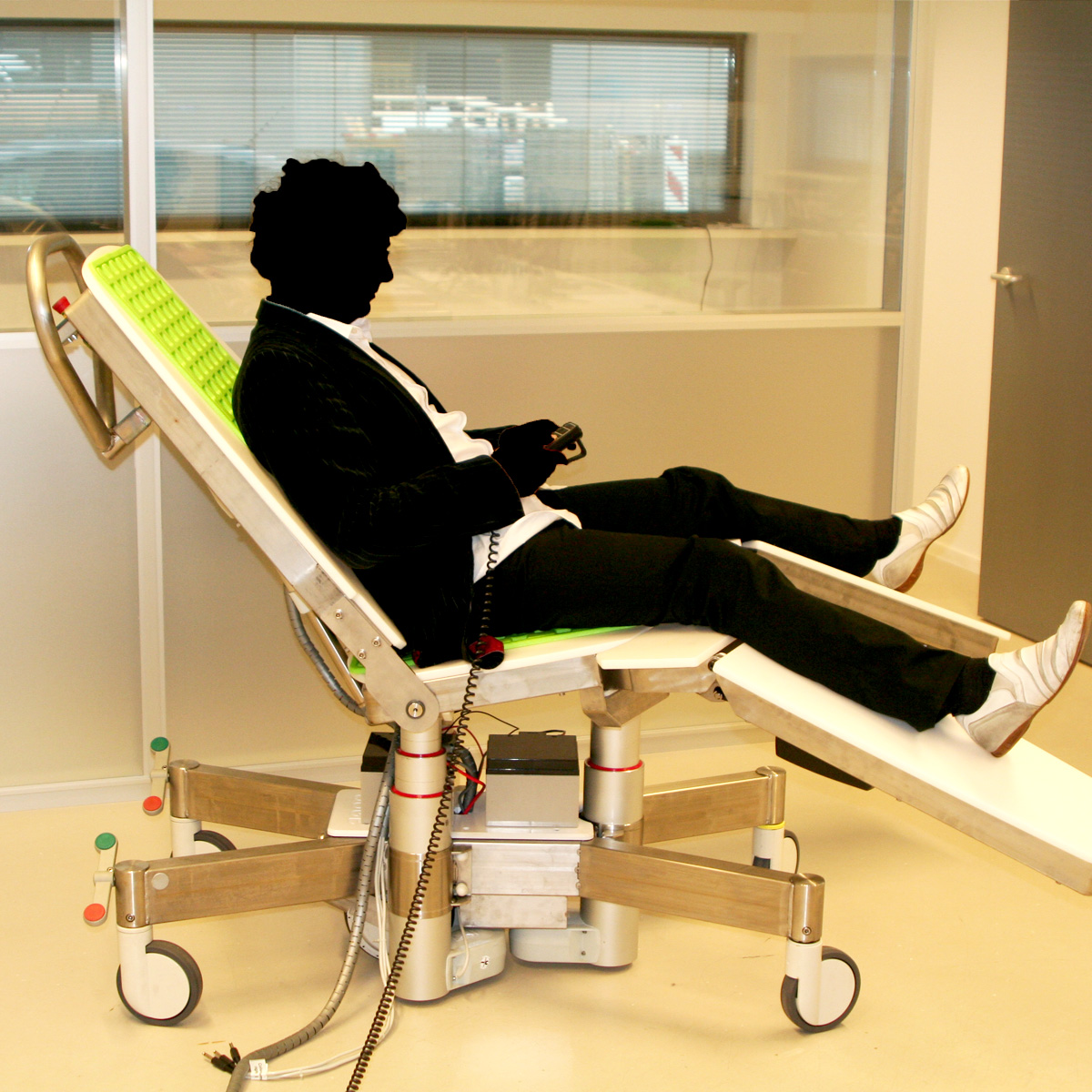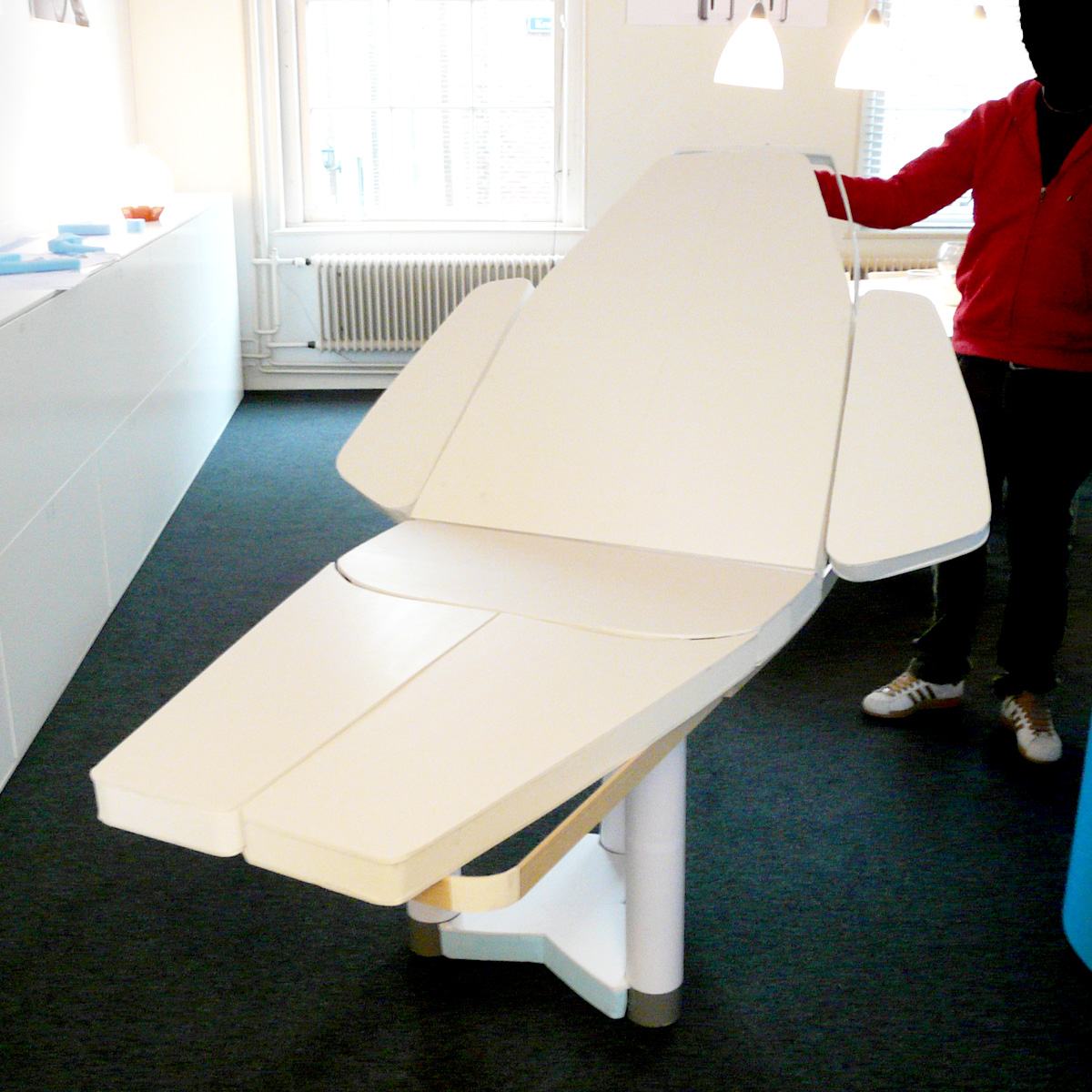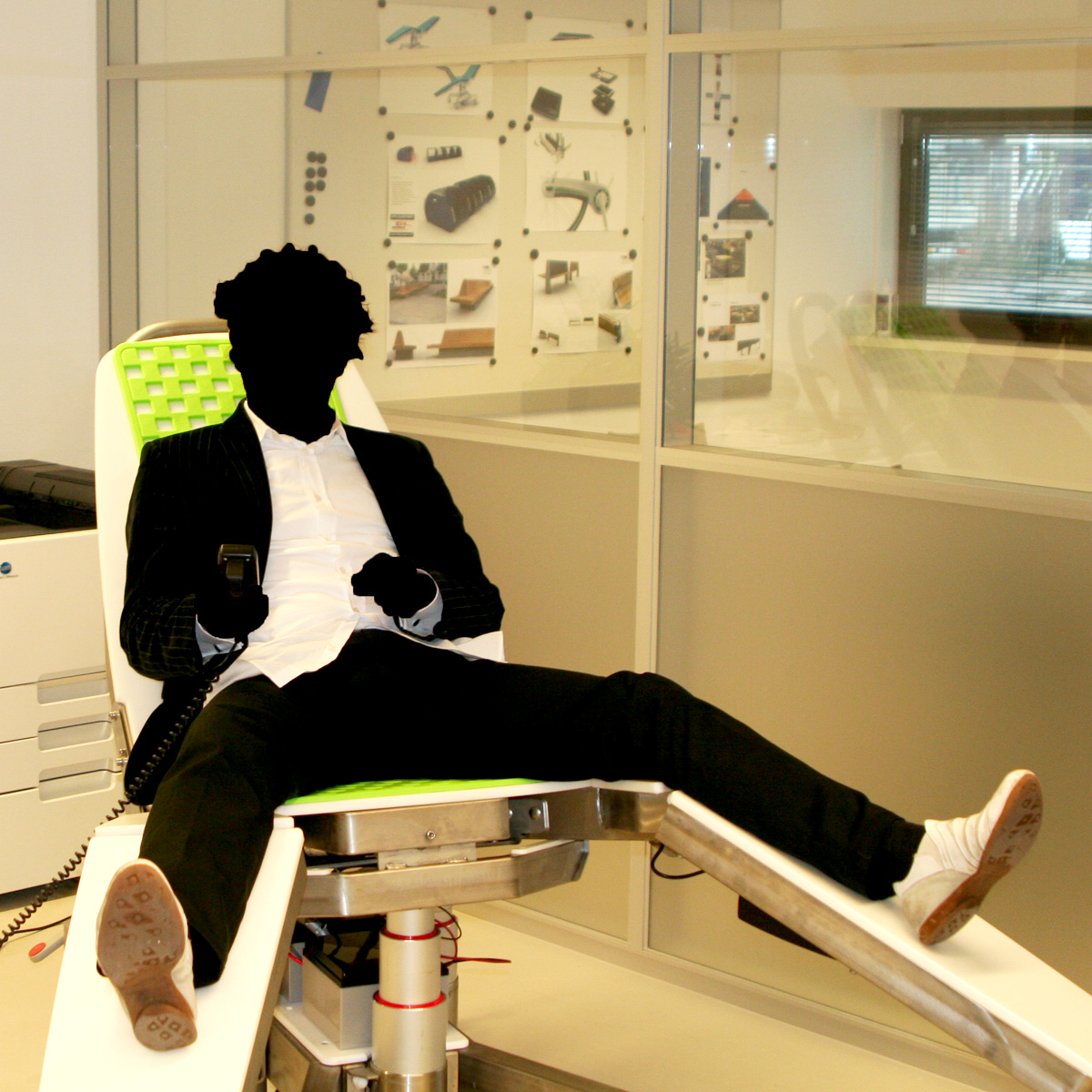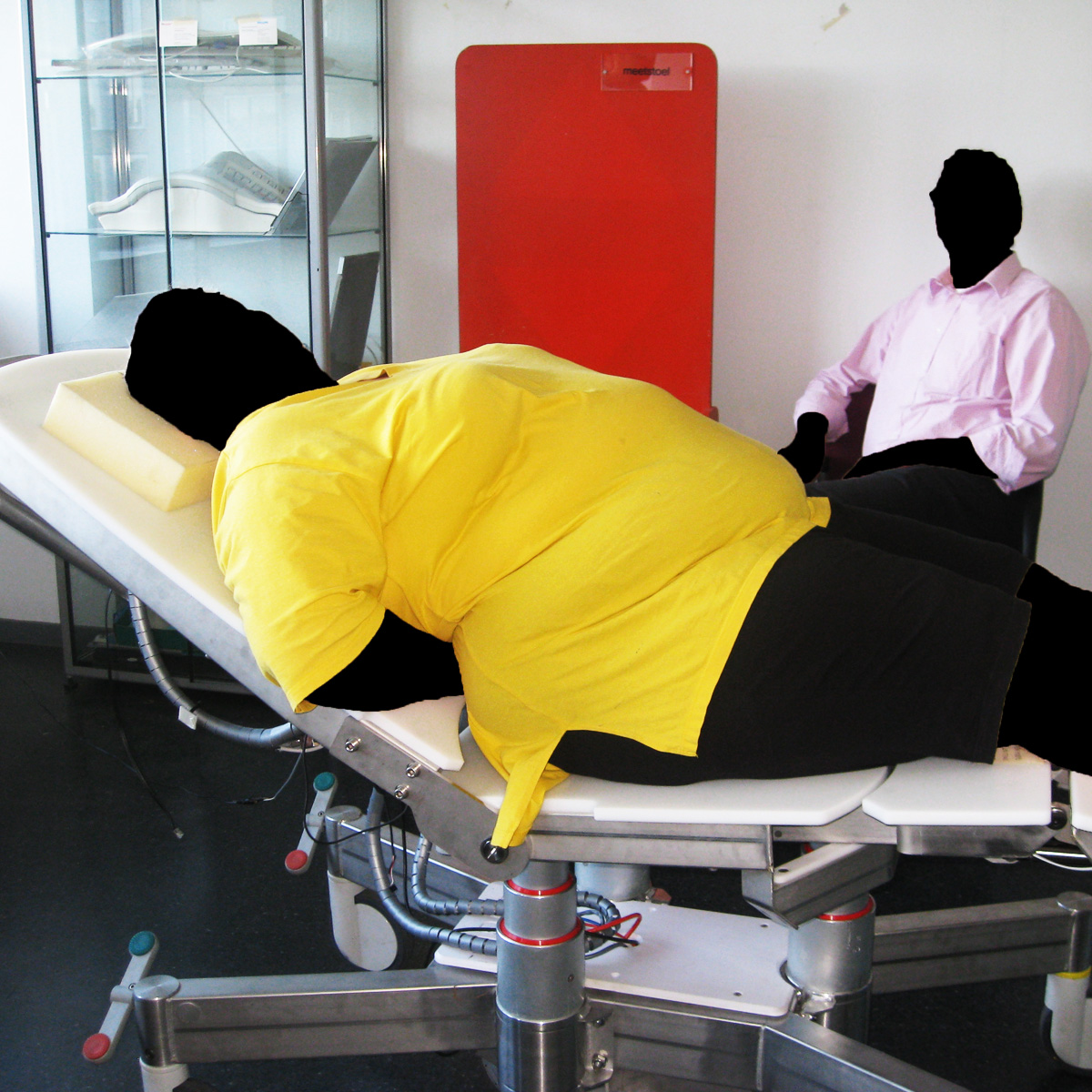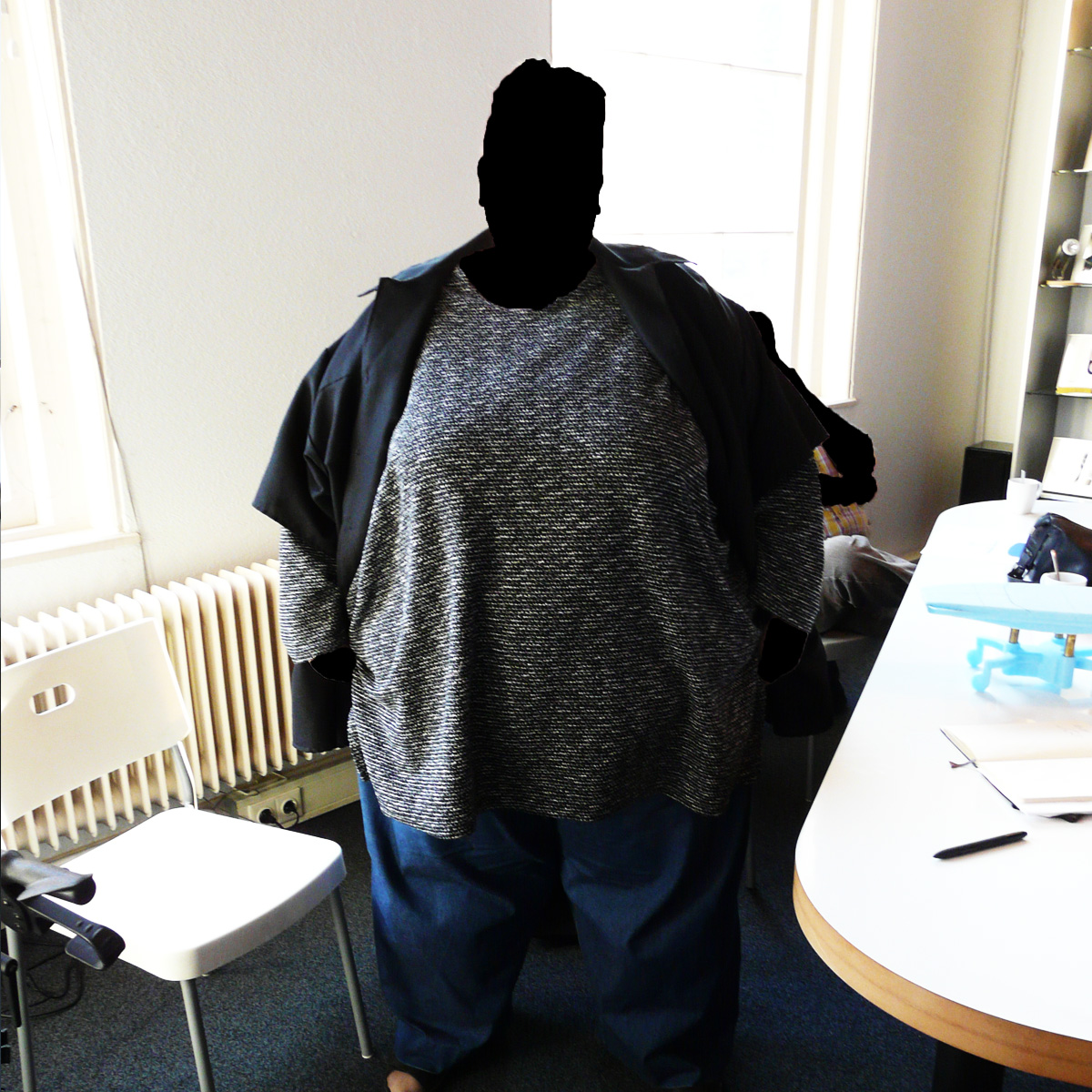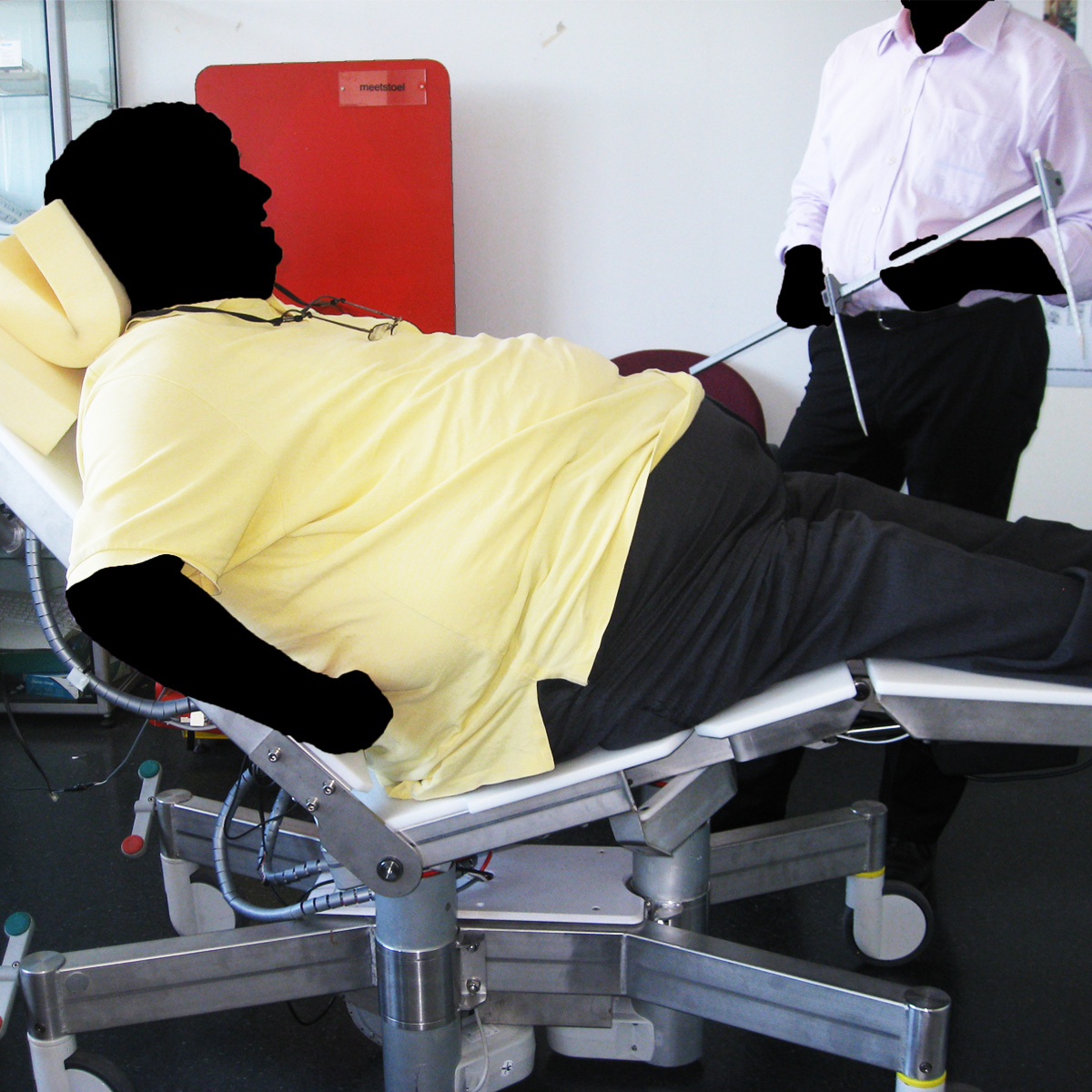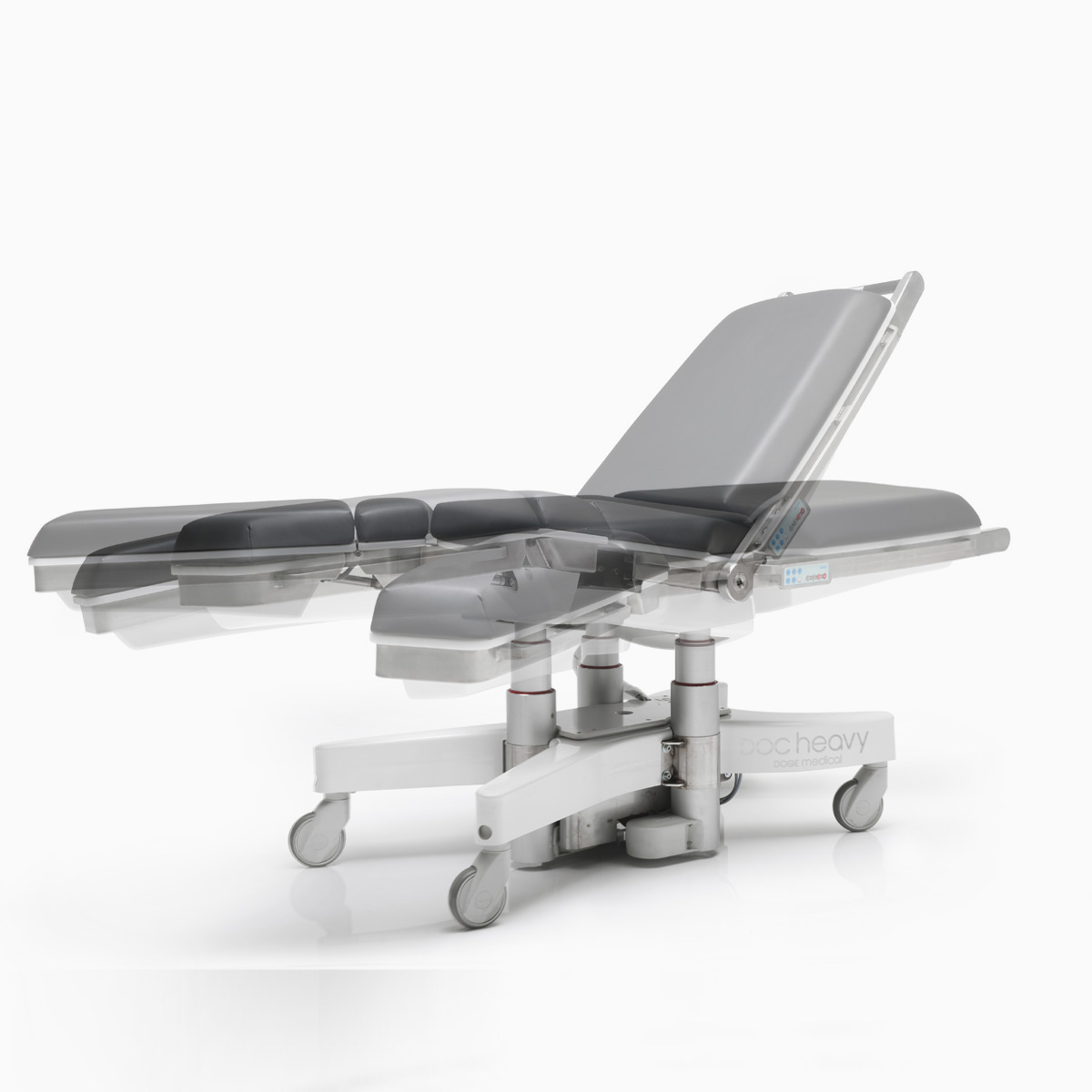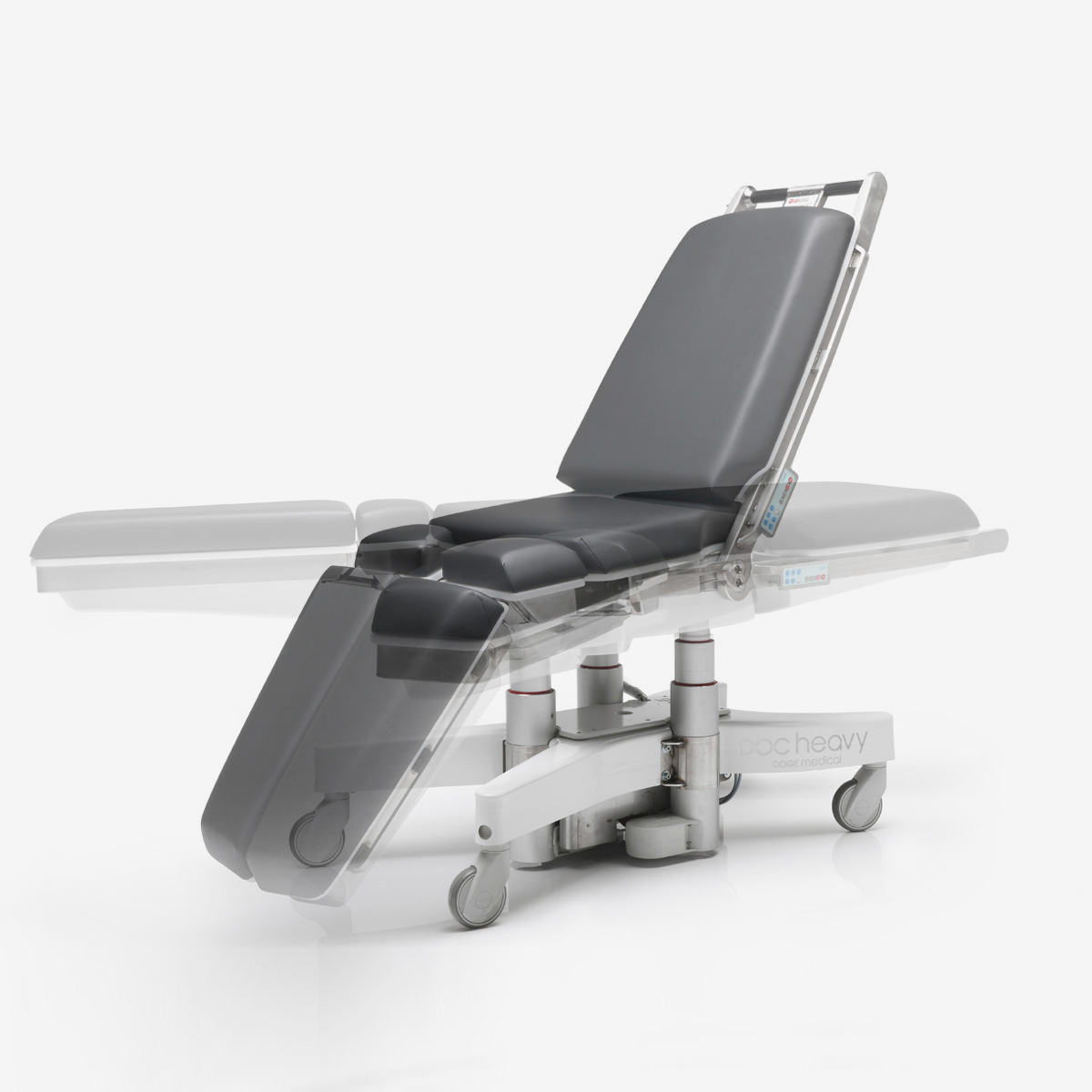Summary of the DOC HEAVY
The number of overweight people is increasing. Reason enough for Doge Medical to expand their range of mobile operating chairs with a model that is especially suitable for this target group. Scope did desk research and discovered that little data is available about the use of operating chairs in heavy people and about their ergonomics. That is why we watched during operations in the obesity clinic of the Rijnstate hospital and we spoke to obese people through the Obesity Association. The result is a design with completely new ergonomics and mechanics, which takes the size and weight of heavy people into account as respectfully as possible.

